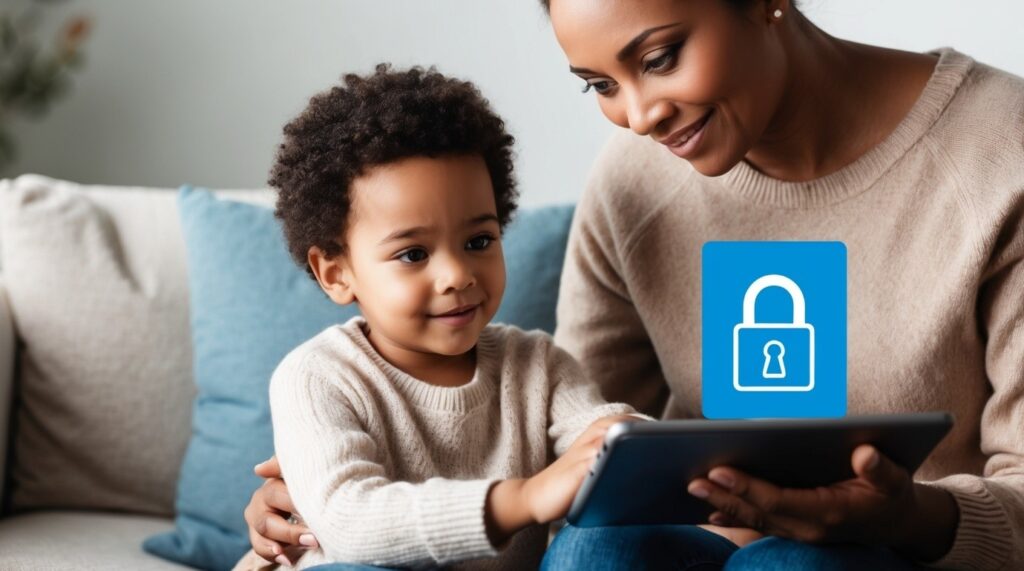Your Child’s Privacy Online: Best Practices for Parents
Navigating the digital world as a parent can be daunting. From social media to apps and gaming platforms, children are online younger and more frequently than ever before. This comprehensive guide equips you with practical, age-specific strategies, expert insights, and tools to protect your child’s online privacy and help them develop healthy digital habits.

Guarding Children’s Digital World
Why Online Privacy Matters
The Impact of a Digital Footprint
Children today have a digital presence before they even understand what it is. Research shows that by age 13, the average child has over 1,000 photos online. These digital footprints can have long-term implications, including:
As Dr. Emma Thompson, a child safety expert, puts it:
“The digital footprint we create for our children today can profoundly affect their futures. Parents must be proactive in protecting this virtual legacy.”
Age-Specific Privacy Strategies
Children’s online needs and behaviours evolve as they grow. Here’s how to protect their privacy at every stage:
5-8 Years: Foundational Digital Safety
At this age, children are often introduced to the internet through educational apps and games.
Key Strategies:
Checklist for Parents:

Teaching young kids the basics of digital safety starts early.
9-12 Years: Emerging Social Media Awareness
Pre-teens are more independent online and may begin using social media or messaging apps.
Key Strategies:
Checklist for Parents:
Teens: Advanced Privacy Management
Teenagers crave independence but still need guidance to navigate complex online interactions.
Key Strategies:
Checklist for Parents:

Building trust through open conversations about online privacy empowers teens to make smart decisions.
If you’re interested in more resources for kids’ content, don’t miss our article on Top Educational YouTube Channels for Kids by Age Group.
Comprehensive Privacy Protection Toolkit
Equip yourself with these tools and resources to enhance your family’s online safety.
Step-by-Step Privacy Setting Guides
1. YouTube:
2. TikTok:
3. Instagram:
Recommended Tools and Apps
Family Digital Safety Contract
Draft a simple agreement with your kids, outlining acceptable online behaviour, privacy expectations, and consequences for breaches.

A family contract helps set clear expectations about online behaviour.
Communication Strategies
How to Discuss Online Safety with Children
Start conversations about online privacy early and keep the tone open and non-judgmental.
Age-Appropriate Tips:
Building Trust and Open Dialogue
Encourage your child to come to you with questions or concerns about their online experiences. Avoid overreacting to mistakes, as this can deter honesty.
Technical Guidance
Platform-Specific Privacy Settings
Parental Control Configurations
Most devices and platforms come with built-in parental controls. Use these features to set screen time limits, restrict downloads, and block inappropriate content.
Psychological Considerations
The Impact of Digital Footprints
Help your child understand that every online action—likes, shares, and comments—contributes to their digital identity.
Building Digital Resilience
Equip your child with coping mechanisms for challenges like cyberbullying or peer pressure. Role-play responses and encourage them to block/report offenders.
Real-World Scenarios and Solutions
Scenario 1: Your 9-year-old asks for TikTok.
Solution: Create an account together, review privacy settings, and establish rules like posting only with parental approval.
Scenario 2: Your teen overshares personal details on Instagram.
Solution: Use this as a teaching moment to discuss the risks of online oversharing. Together, edit their profile and posts.
Scenario 3: Your child receives an unsolicited message from a stranger.
Solution: Teach them to block and report the user immediately. Reiterate the importance of not engaging.
Raising Privacy-Savvy Digital Citizens
Protecting your child’s online privacy is an ongoing process. By setting a strong foundation and maintaining open communication, you empower your child to navigate the digital world responsibly.
Key Takeaways for Parents:

Offline moments strengthen family bonds and provide a healthy digital balance.
Additional Resources
With these strategies and tools, you can confidently protect your child’s privacy while fostering a safe, empowering online environment.
What’s your biggest challenge in managing your child’s online privacy? Share your thoughts in the comments below!

